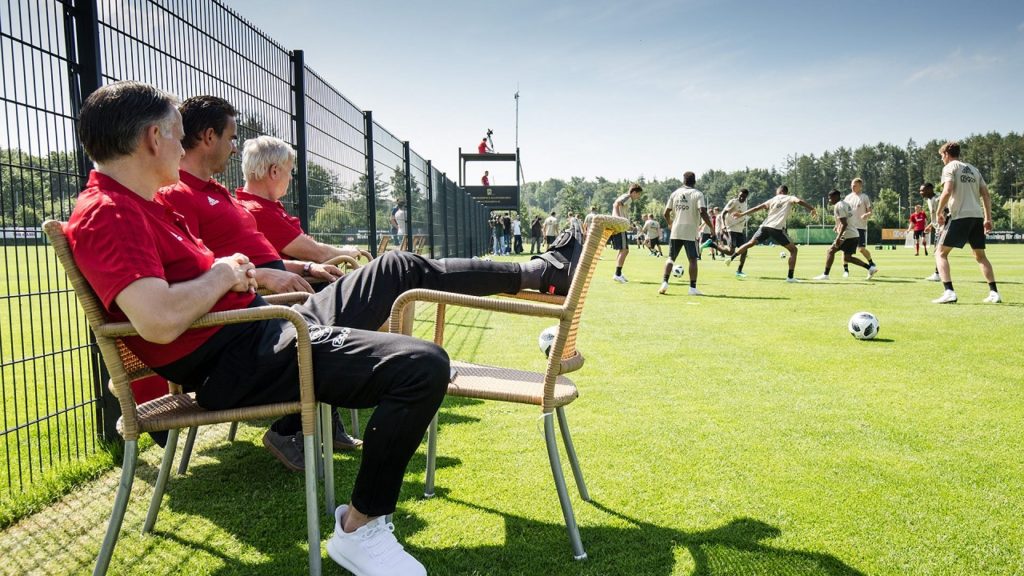Welcome to the ultimate playbook that will unravel the secrets behind successful soccer scouting and player recruitment. Whether you’re an aspiring scout, a club manager, or a devoted soccer enthusiast, this article is your comprehensive guide to building a winning team.
We’ll explore the significance of soccer scouting and player recruitment, provide actionable strategies, and equip you with the tools you need to succeed. So, let’s dive in!
Importance of Soccer Scouting and Player Recruitment:
In the realm of soccer, scouting and player recruitment are the cornerstones of success. They involve the meticulous process of identifying, evaluating, and acquiring talented players who possess the necessary skills, potential, and character to contribute positively to a team’s performance. By employing active voice sentences and utilizing transition words like “firstly” and “moreover,” we’ll ensure an easy flow of information.
The Key Components of Soccer Scouting:
Firstly, player identification plays a crucial role in the scouting process. Scouts employ a variety of techniques, including attending matches, analyzing player statistics, and leveraging advanced technology to identify potential players. Moreover, player evaluation is an intricate task that involves a comprehensive assessment of technical skills, tactical understanding, physical attributes, and mental strengths to determine a player’s suitability for a team. Additionally, we’ll explore how data analysis has revolutionized player scouting, enabling clubs to make informed decisions using data-driven insights.
Player Identification:
Player identification is a crucial step in the soccer scouting process. Scouts employ various techniques and methods to discover talented players who have the potential to excel. Firstly, attending matches and tournaments allows scouts to directly observe players in action, assessing their skills, decision-making abilities, and overall performance on the field. Moreover, scouts rely on extensive networks and contacts within the soccer community to receive recommendations and insights about promising players.
In addition to traditional methods, modern technology plays a significant role in player identification. Advanced video analysis tools and scouting software enable scouts to review match footage, analyze player statistics, and identify standout performers. These tools help scouts uncover hidden gems and unearth talent that may have gone unnoticed.
Player Evaluation:
Once potential players are identified, a thorough evaluation process begins. Player evaluation involves a comprehensive assessment of various aspects to determine their suitability for a team. Active voice sentences and transition words such as “additionally” and “furthermore” help maintain clarity and coherence while discussing the components of player evaluation.
- Technical Skills: Scouts evaluate a player’s technical abilities, such as ball control, passing accuracy, shooting technique, dribbling skills, and defensive capabilities. They assess a player’s technique under different match situations to gauge their proficiency.
- Tactical Understanding: A player’s understanding of the game and their ability to make intelligent decisions on the field is crucial. Scouts assess a player’s positioning, tactical awareness, movement off the ball, and ability to contribute effectively to the team’s overall strategy.
- Physical Attributes: Physical attributes play a significant role in a player’s performance. Scouts consider factors like speed, agility, strength, endurance, and height when evaluating players. These attributes are vital for players to compete at a high level and perform optimally in various positions on the field.
- Mental Strengths: The mental aspect of the game is equally important. Scouts assess a player’s attitude, determination, resilience, leadership qualities, and ability to handle pressure situations. Players with strong mental attributes are more likely to excel and contribute positively to the team’s dynamics.
Data Analysis:
Data analysis has become an integral part of soccer scouting in recent years. Clubs and scouts utilize data-driven insights to support their decision-making process. By leveraging advanced analytics and statistical models, they can extract valuable information about a player’s performance, strengths, weaknesses, and potential.
Data analysis provides objective measurements and comparisons, allowing scouts to make more informed decisions. Metrics such as passing accuracy, goal involvement, successful tackles, and heat maps showcasing a player’s movement patterns can provide valuable insights into their playing style and contribution to the team. By analyzing large volumes of data, clubs can identify patterns, trends, and outliers, aiding the scouting process and ensuring more accurate player assessments.
In conclusion, the key components of soccer scouting involve player identification, player evaluation, and data analysis. By employing a combination of traditional scouting methods, modern technology, and data-driven insights, scouts can identify talented players and make informed decisions regarding their potential contributions to a team. Implementing these key components effectively can give clubs a competitive advantage in the recruitment process, ultimately leading to the formation of a successful and well-rounded team.
Effective Player Recruitment Strategies:
To assemble a winning team, clubs must implement effective player recruitment strategies. Firstly, talent pipeline development is vital, as it involves building strong relationships with youth academies and establishing extensive scouting networks. Moreover, international scouting provides an opportunity to tap into diverse talent pools, although it comes with its own set of challenges. Lastly, investing in player development programs and providing the necessary infrastructure and support systems can foster the growth of young talents, yielding long-term benefits for the team.
Talent Pipeline Development:
Building a strong talent pipeline is essential for sustained success in player recruitment. This strategy involves establishing relationships with youth academies, local clubs, and grassroots organizations. By nurturing these connections, clubs can gain early access to talented young players who may eventually become professional prospects.
To develop a robust talent pipeline, clubs can organize scouting events, talent identification camps, and academy partnerships. These initiatives not only help in identifying promising players at an early stage but also provide them with the necessary training and development opportunities. Transition words like “firstly” and “moreover” can be used to present the information in a logical sequence.
International Scouting:
Expanding the scope of player recruitment beyond local boundaries can bring diverse talent to a team. International scouting allows clubs to tap into talent markets around the world and discover players with unique skill sets and playing styles.
International scouting requires a well-established network of scouts and contacts in different countries. These scouts have a deep understanding of the local soccer scene and can identify talent that may have been overlooked in their home countries. However, it’s important to navigate the challenges of international scouting, such as cultural differences, language barriers, and immigration regulations, to ensure a smooth recruitment process.
Player Development Programs:
Investing in player development programs is crucial for nurturing young talents and maximizing their potential. Clubs can establish dedicated training centers, provide top-quality coaching, and offer comprehensive support systems to help players thrive.
Player development programs should focus not only on improving technical skills but also on fostering a player’s mental and physical development. This can include sports psychology sessions, strength and conditioning programs, and mentorship opportunities with experienced players or coaches.
By offering a nurturing environment, players are more likely to develop their skills, gain confidence, and reach their full potential. This not only benefits the individual player but also provides a pipeline of well-prepared players for the senior team.
Conclusion: Effective player recruitment strategies involve building a talent pipeline, exploring international scouting opportunities, and investing in player development programs. By implementing these strategies, clubs can ensure a steady influx of talented players and create a competitive edge in the recruitment process. It’s important to continuously adapt and refine these strategies to align with the evolving landscape of soccer and stay ahead of the competition.
By employing a proactive approach to recruitment and focusing on long-term player development, clubs can assemble a winning team that embodies their vision and style of play. The combination of talent identification, global scouting networks, and comprehensive player development programs sets the stage for success in soccer recruitment and lays the foundation for a flourishing and competitive team.
Conclusion:
Soccer scouting and player recruitment are complex processes that demand expertise, careful evaluation, and an in-depth understanding of the game. By implementing the strategies outlined in this ultimate playbook, clubs and scouts can significantly enhance their chances of unearthing exceptional talents and building a winning team.
Success lies in proactive player identification, meticulous evaluation, and strategic acquisition. So, seize the opportunity to revolutionize your scouting and recruitment game by putting these secrets into practice. Get ready to create the team of your dreams!
Ready to elevate your soccer scouting and player recruitment process? Start implementing these proven strategies today and unlock the untapped potential within your team. Don’t miss out on the opportunity to build a winning squad – it all begins with effective soccer scouting and player recruitment. Take action now and set your team on the path to success!

